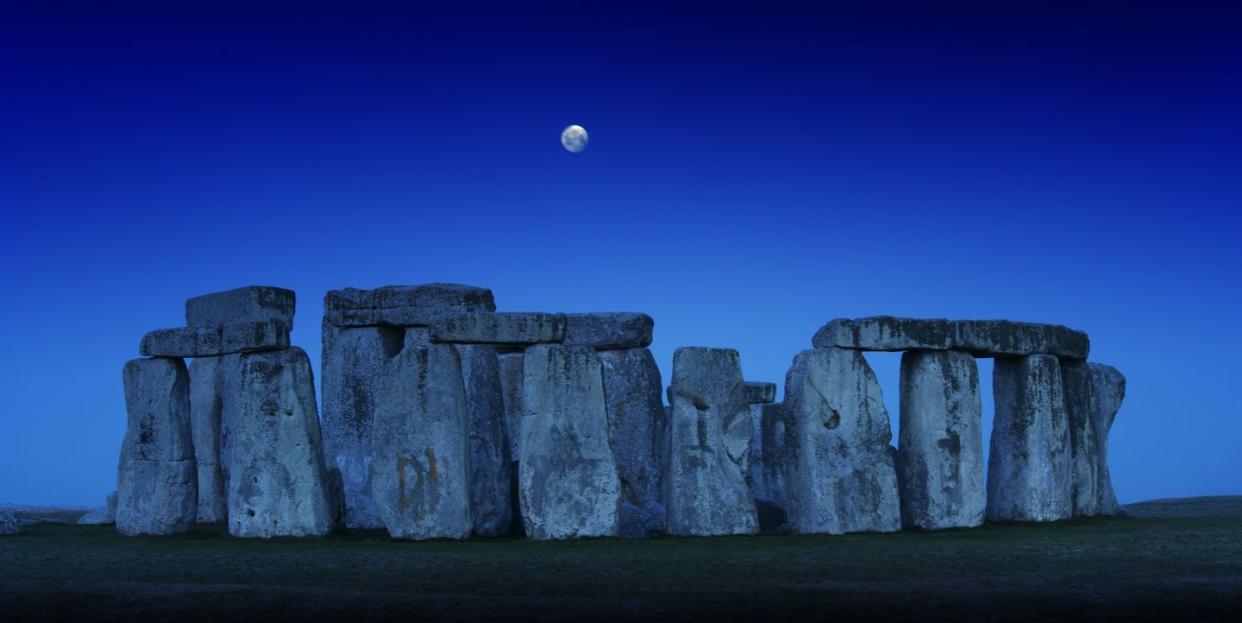Scientists Have Solved the Biggest Mystery of Stonehenge

A spectral analysis reveals that most of the surviving Stonehenge stones have the same source.
Stonehenge is both a profound mystery and an important site for scholarly research.
Chemical matching puts the stones' source about 15 miles away in a well known quarry site.
Scientists have solved one huge, longstanding mystery relating to Stonehenge, after years of dogged examination and using the latest technology to its best effect. By running mass spectrometry on one of the site’s exigent 52 stones, the researchers were able to match its trace elements to a site in England where that rock was likely mined.
In a new paper in Science Advances, the researchers explain exactly what they did:
“Here, we apply a novel combination of geochemical and statistical approaches to determine the provenance of the sarsen stones at Stonehenge. First, we use portable x-ray fluorescence spectrometry to provide an initial chemical characterization of all extant sarsen uprights and lintel stones. We then undertake inductively coupled plasma mass spectrometry and ICP–atomic emission spectrometry analyses of samples from a recently rediscovered core drilled through sarsen Stone 58 at Stonehenge and a representative range of sarsen boulders from across southern Britain.”
🗿 OUR WORLD IS WEIRD. Let's explore it together.
The site the scientists decided on as the likely source is called West Woods, which is about 15 miles from Stonehenge. They say West Woods occupied a special place for Neolithic people: It was a source of tons, literally, of the best stone they could find and had natural access points that made it easier to access. And, most importantly for this research, “West Woods, in the southeast Marlborough Downs, yields permissible matches for all median immobile trace element ratios from the Phillips’ Core; this includes [unusual minerals] which fall within instrumental uncertainty.”
First, the researchers used nondestructive (like noninvasive testing for a human) surface tests at the Stonehenge site. This helped them narrow down which stones were likely made of the same stone from the same source, which it turns out is the vast majority of surviving stones. But without a sample they could test using advanced mass spectrometry, they couldn’t conclude anything or try to match the stones with confidence.
The Phillips’ Core they mention could be considered the key to finally unlocking the answer, and this part gives the whole story an Agatha Christie level of interlocking surprises.
In the 1950s, researchers and conservation experts joined forces to right, and secure, three stones that had fallen in the 1790s. To do that, one contractor drilled a core through each of the three stones in order to install a metal brace. The core from stone 58 was lost for decades and rediscovered in 2018. Finally, researchers had a sample they could analyze.
📩 Make your inbox more awesome.
Why did they need to wait for some mystery item to appear, instead of testing the rocks as they stand? Well, since mass spectrometry of this kind is a destructive test, researchers must have a sample they can comfortably turn to dust. You can’t just walk up to one of humankind’s oldest and most famous monuments and chip a little bit into an envelope. Even to take a sample from the core required extensive special permission, because these cores could represent the only testable material we ever safely have from the stones.

So with the core sample in hand, a lab in Spain ground it up to run analyses. Any exterior weathering was removed, leaving a clean sample that was ground to mere micrometers. Then the scientists ran three “digestive” tests where some amount of sample is treated and completely destroyed by an application of acid to reveal trace elements and other hints about chemical makeup. With a full spectral analysis in hand, the team could compare side by side to their 20 candidate sites and deduce that West Woods is the most likely match.
Finding the lost core provided a special, treasured research material, and the data these scientists obtained could be analyzed in more detail by others in the future. And with a likely candidate location in hand, other kinds of researchers altogether can think more carefully about how ancient people cut and prepared these gigantic stones and transported them even mere miles. The past, it seems, has an exciting future.
You Might Also Like

